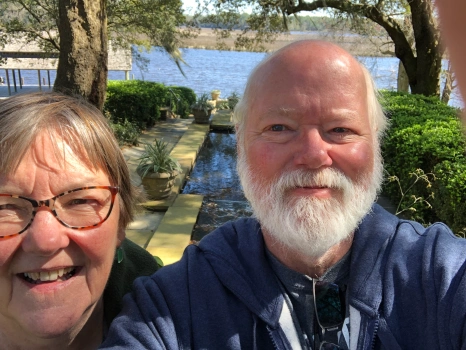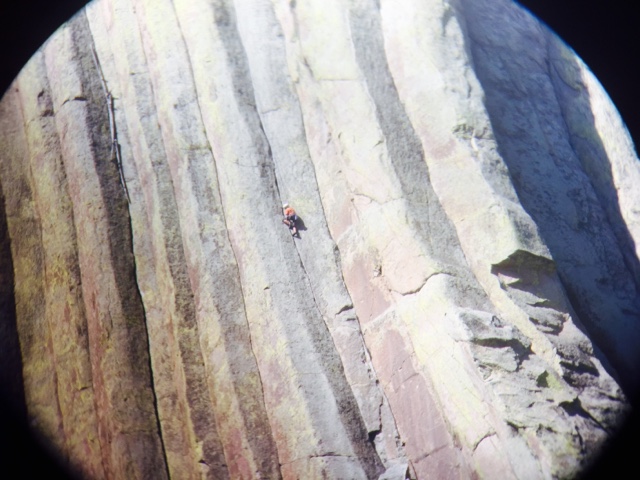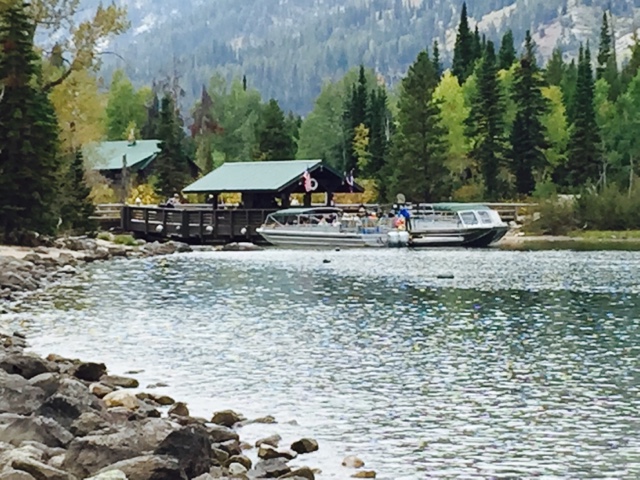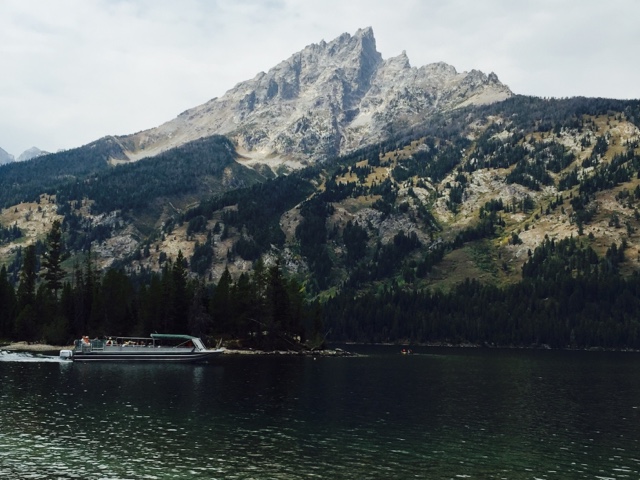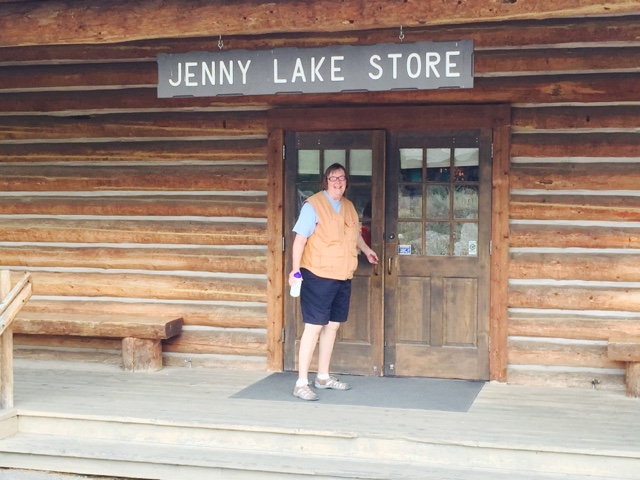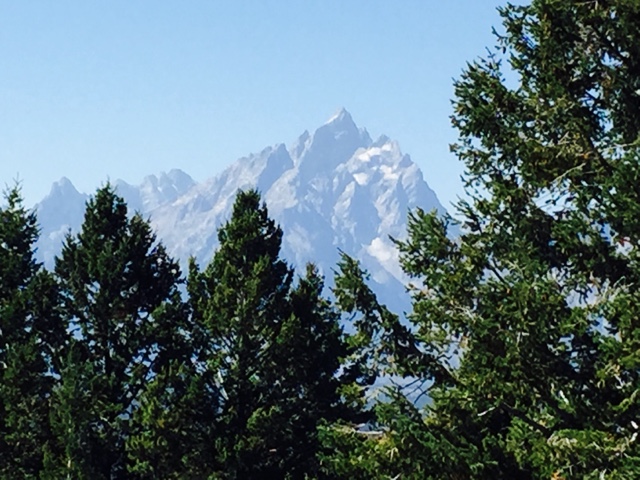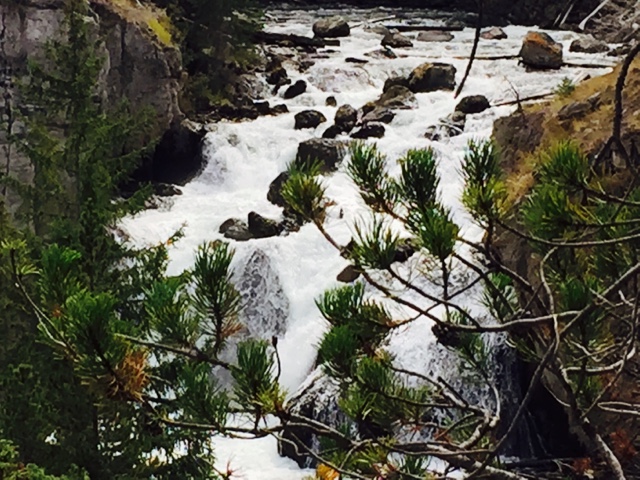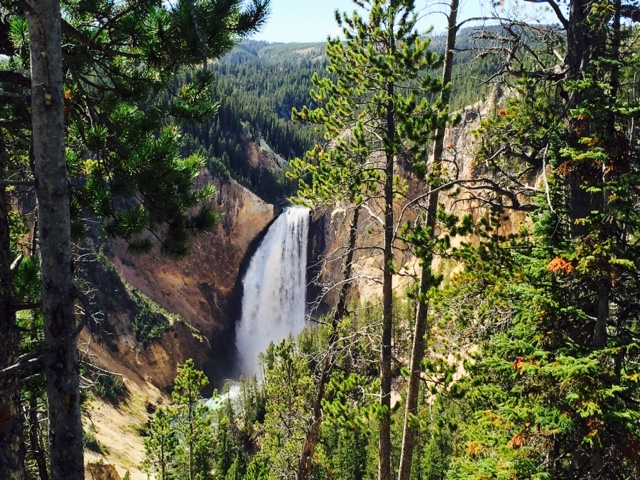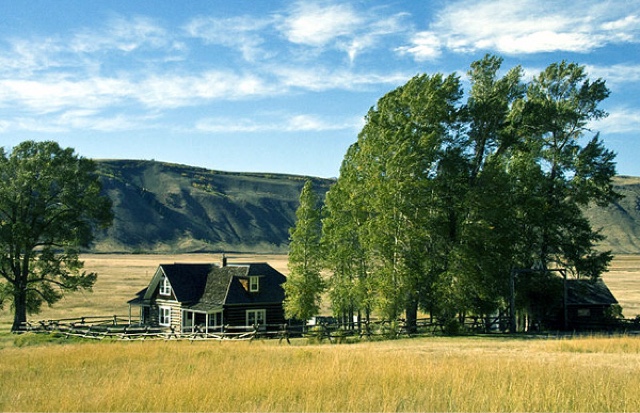It was pretty close to 4-1/2 hrs from Adrian to Hastings. Maybe a bit more, there was some construction. It is hard to say but after almost 5,000 miles through North Dakota, Montana, Idaho, Oregon, Wyoming and South Dakota some of the worst roads we have seen are right here. I 90 and US 52 are in pretty poor shape. It was a stark contrast between I 90 in South Dakota and Minnesota. So why is this? What is it about Minnesota? I 94 heading NW towards Fargo when we left was the same way.
Month: September 2015
Adrian, MN
Our last stop before home.
Big Bend Dam Corp of Engineers Campground
We left the Devils Tower National Monument after two nights. It rained a bit overnight. We went up over the top of the Black Hills into South Dakota and then down towards Rapid City and then east. It started raining again, the wind was blowing from the north at 20-30 mph. We had to stop at one point because one of the awnings was trying to unwind in the wind. We pulled into a gas station parking lot where there was another coach there with the same problem. We added a couple of ropes to hold the awning in place. It was fine. So it just poured and blew all the way across the wasteland. This has to be the most boring drive we have ever done.
Will There Be Mashed Potatoes?
The drive across Wyoming was interesting, diverse and engaging. Things to look at, wonder about, ask questions and postulate answers. From Caspar we headed north east towards Gillette and then a bit east to the first National Monument in America, Devils Tower. Yes, there is no apostrophe. Whether left out on purpose or accident it is as the act of Congress declared it to be.
Just as Richard Dreyfus imagined it, it looks like a giant pile of mashed potatoes formed with a fork. More than 1,500 ft high. In fact, it is a highly regarded sacred place by many Native American people.
A few more days to get home. There is the vast wasteland of South Dakota to cross. A Corp of Enginners Campground at Big Bend Dam looks like our next stop.
Colter Bay, 9/3-9/15/2015 #8, Time to Head East
We have really enjoyed our time here in Colter Bay, Grand Teton National Park, The National Elk Refuge and Yellowstone National Park. There is so much to do and see that two weeks is hardly enough.
Colter Bay, 9/3-9/15/2015 #7, Snake River Access, Jenny Lake
Schwabacher Road gets you down to a side channel of the Snake River. Another one of these dirt roads on which most people don’t want to get their cars dirty. But when you get to the end of the dirt road there is a small parking area near where Schwabacher’s homestead was. There was river access through the channels out to the Snake. Not something used by anyone other than fishing folk now. No boats.
Colter Bay, 9/3-9/15/2015 #6, Signal Mountain, Chapel of the Sacred Heart
There are many side roads and trails in the Tetons. Some have names, some do not. Some are easy to follow, many are not. It is up to each visitor to look for these places and to go or not go.
Every angle looks different and I just never got tired of looking up at the mountains. Up on Signal Mountain I didn’t have to look up as much.
Colter Bay, 9/3-9/15/2015 #5
Another stunning day in the Tetons. Mornings are usually bright and clear. Some clouds push over the mountains from the west in the afternoon.
Our old Jeep and the older driver did well. Susan got nervous a couple times when we got close to the edge.
And tall tales of fishing. There were many fishing people. Many on shore, some wading in. Many in these boats that look like New England dories.
Colter Bay, 9/3-9/15/2015 #4, Two One Day Trips to Yellowstone
Our original idea was to stay in Yellowstone for two weeks with a day trip or two to Grand Teton National Park.
And through the Firehole Canyon where it merges with the Gibbon river coming from the east to make th Madison River which flows west and then north through Montana.
We stopped at Madison for a picnic, visited the Visitor’s Center and drove throgh the campground to see what it looked like. It was a nice campground with some shade and roomy sites. I can see why it is a popular campground, one we would like to stay at. It is one of the first to open and one of the last to close. Great fishing nearby.
It was as big and as impressive as we remembered. Some one was asking at the main dining room about dinner reservations. The next available were two days out at 9:30 PM. Not only do you need to make room reservations you need dinner reservations as well. And then a tour bus disgorged 40 tourists who walked right in, got in line and went into the main dining room. Probably why nothing is available for a couple days.
The lake is large, beautiful and has minimal access.
We stopped for an ice cream on the way back to Colter Bay. A raven kept us company at the table. What a big, bold bird. Absolutely confident around people.
Colter Bay, 9/3-9/15/2015 #3
Saturday, September 4th.
We stopped by the Miller House out on the Elk Refuge. It was built in the late 1800s by some guy named Robert Miller who had homesteaded 160 acres about 3 miles from where Jackson is today. It had water. He went back to Chicago to marry his wife and brought her to Wyoming. They built a big 6 bedroom house here but never had any children.
